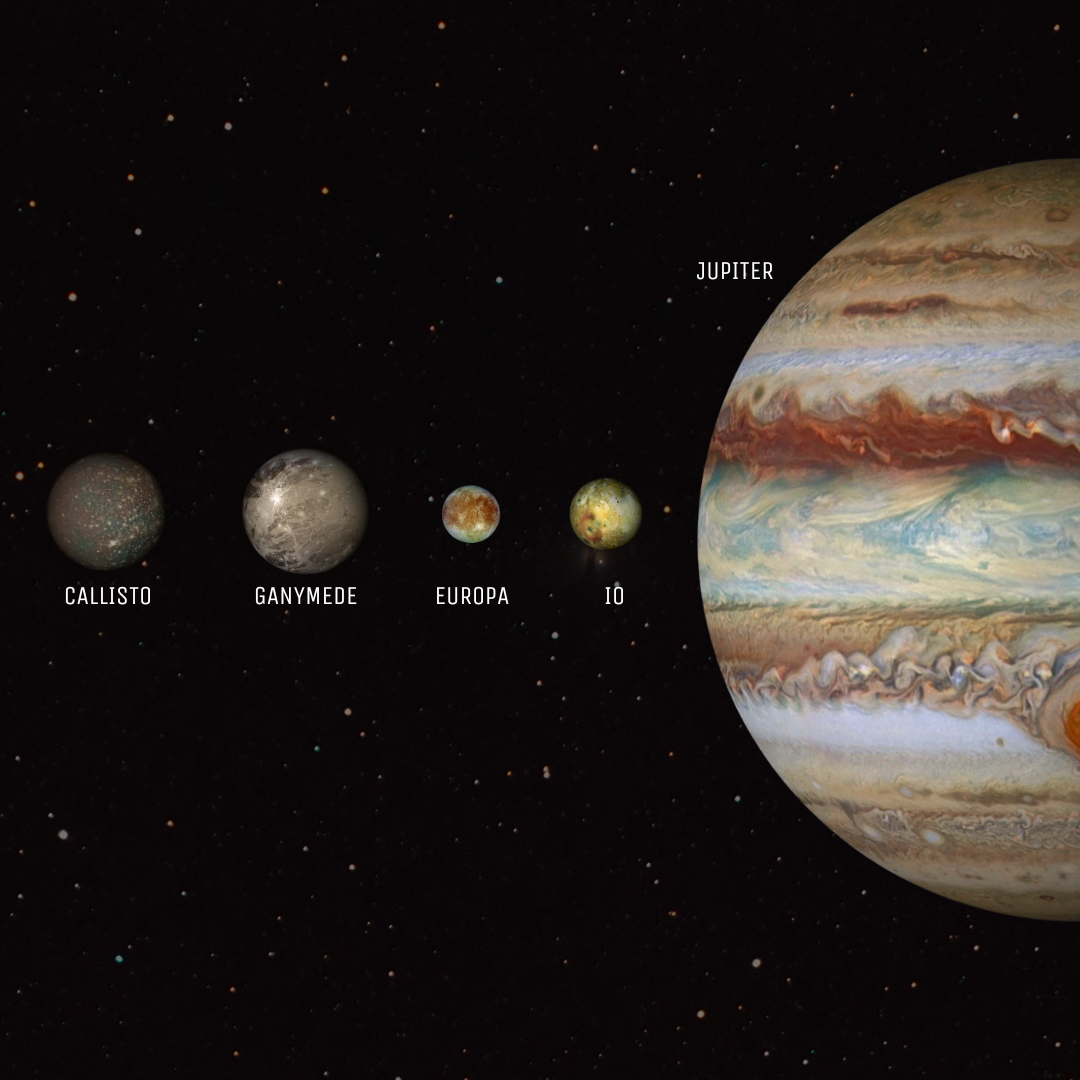
Solar System: Galiean Moons
The Galilean moons, named after their discoverer Galileo Galilei, comprise four of the largest satellites orbiting Jupiter: Io, Europa, Ganymede, and Callisto. These celestial bodies are not only fascinating due to their size and proximity to the largest planet in our Solar System, but also because they exhibit unique geological and potentially habitable features. This article aims to provide a detailed overview of the Galilean moons, while highlighting their importance in the context of planetary science.
- Io: The Volcanic Marvel
Io is the innermost and third-largest of the Galilean moons. With a diameter of 3,643 km, it is slightly larger than Earth's Moon. What sets Io apart from other celestial bodies is its extreme volcanic activity. The moon's surface is covered with over 400 active volcanoes, making it the most geologically active body in the Solar System. This intense activity results from the tidal heating caused by Io's elliptical orbit and its gravitational interactions with Jupiter and other nearby moons. The constant resurfacing due to volcanic eruptions makes Io's surface relatively young, with an estimated age of just one million years.
- Europa: The Icy Ocean World
Europa, the smallest of the Galilean moons, has a diameter of 3,122 km. Its surface is primarily composed of water ice, which has led to the hypothesis of a subsurface ocean beneath the icy crust. The potential presence of liquid water, coupled with the detection of salts and other chemical compounds, has made Europa a prime target for astrobiology missions searching for signs of life. Tidal heating generated by the gravitational interaction with Jupiter is believed to maintain the liquid state of Europa's ocean, possibly even allowing for the existence of hydrothermal vents on the ocean floor.
- Ganymede: The Largest Moon in the Solar System
Ganymede, with a diameter of 5,268 km, is not only the largest of the Galilean moons but also the largest moon in the entire Solar System. It has a varied surface, with both icy and rocky regions, as well as a thin atmosphere composed mainly of oxygen. Notably, Ganymede is the only known moon to possess a magnetosphere, which is created by its partially molten iron core. This magnetosphere shields Ganymede from the harmful effects of Jupiter's radiation belts, making it an intriguing candidate for future space missions.
- Callisto: The Ancient and Cratered World
Callisto, the outermost and second-largest of the Galilean moons, has a diameter of 4,821 km. Its surface is heavily cratered and ancient, with a landscape that has remained relatively unchanged for billions of years. Callisto's lack of geological activity is attributed to its distance from Jupiter, which results in reduced tidal heating. Unlike the other Galilean moons, Callisto does not possess any apparent signs of subsurface oceans or tectonic activity, making it a valuable reference point for understanding the effects of tidal heating and geological processes in the Solar System.
